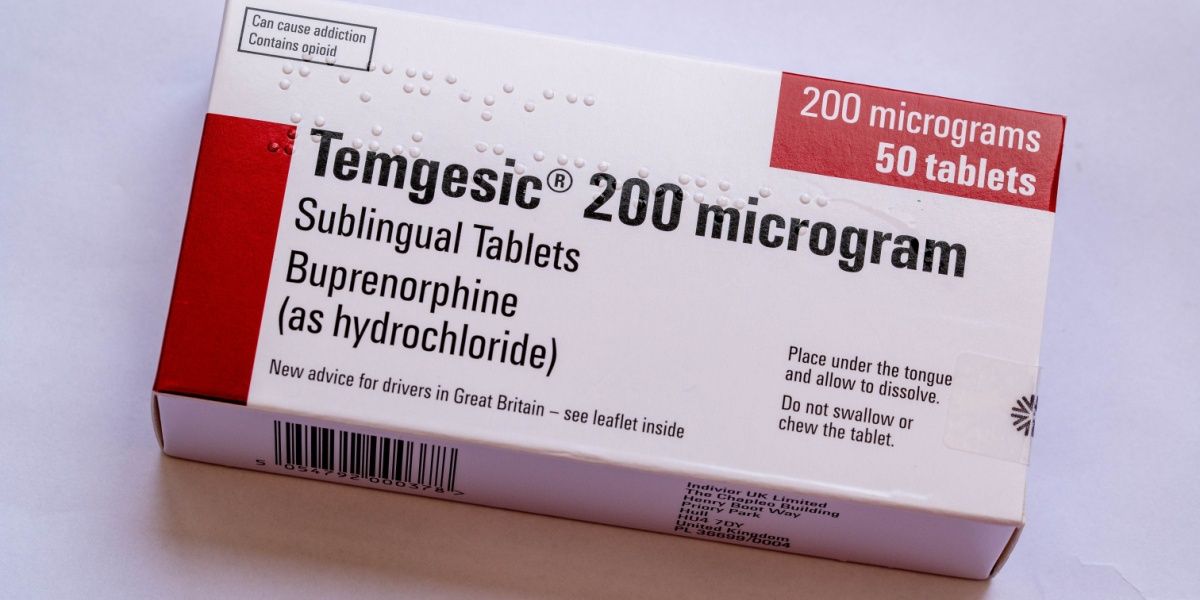Naltrexone is an opioid antagonist that is FDA-approved for alcohol use disorder and opioid dependence as well as other applications. It has also gained recent popularity for weight loss, and low-dose naltrexone may also have positive effects for individuals with autoimmune diseases.

What Is naltrexone?
Naltrexone is a prescription medication that is primarily used to treat alcohol use disorder and opioid dependence. It was approved by the Federal Drug Administration in 1984 for medical use in the United States.[1]
This medication is useful in these treatment regimens because it helps people stop using opioids and alcohol and remain off of them.
Naltrexone belongs to the class of drugs known as opioid antagonists, which means it works by binding to opioid receptors in the brain and blocks opioids like heroin, fentanyl, and pain relief medication such as oxycodone from exerting their effects. This effect helps people who have withdrawn from opioids to remain abstinent. Naltrexone also reduces cravings for opioids and, due to its binding effects, prevents opioid users from feeling a "high" if they were to use opioids while on the medication.[1]
Naltrexone also exerts effects on additional receptors in the brain that ultimately reduce the pleasurable sensations associated with alcohol consumption. For this reason, it is a treatment option for alcohol use disorder.[1]
How does naltrexone work?
Naltrexone works by blocking the euphoric effects of opioids by occupying binding sites of opioid receptors in the brain. Specifically, naltrexone binds to the mu-opioid receptor in the brain. It is also a weaker antagonist of the kappa and delta opioid receptors in the brain, which also play a role in exerting opioid effects.[1]
By occupying these receptors, naltrexone blocks the effects of opioids and prevents opioid intoxication.
Naltrexone also affects the hypothalamic-pituitary-adrenal (HPA) axis, which plays a vital role in how the body responds to alcohol consumption. The alterations in the HPA axis suppress the amount of alcohol consumed. This helps individuals with alcohol use disorder with medical detox and remaining sober by cutting back cravings.[1]
Naltrexone dosage
Naltrexone dosage depends on the formulation and condition it is treating.
Naltrexone comes in two forms: a 380 mg extended-release injection and 50 mg oral tablets. The extended-release injection is administered monthly, while oral tablets must be taken daily. The dosage also may vary based on an individual's specific needs and will be determined by your healthcare provider.[2]
In general, for treating alcoholism, the recommended dose of tablets is one tablet (50 mg) once daily. For opioid dependence, the recommended starting dose is lower, beginning with half of a tablet (25 mg) daily. If no withdrawal symptoms occur, your healthcare provider will increase the dosage to 1 tablet daily for maintenance.[2][3]
For individuals with opioid use disorder, alternative dosing schedules exist for tablets. Your healthcare provider may recommend starting with one tablet every weekday and two tablets on Saturday. Then, transition to two tablets every other day, and finally reach a maintenance schedule of three tablets every third day. Your healthcare provider will work closely with you to determine what dosing schedule best suits your needs and treatment plan.[3]
For both alcoholism and opioid dependence, the recommended dose of intramuscular injection is 380 mg intramuscularly once monthly.[1]
Naltrexone for opioid use disorder treatment
Naltrexone is a treatment option for individuals grappling with opioid use disorder, which is the chronic use of opioids like fentanyl or painkillers that causes significant impairment or distress in an individual's life.[4]
This medication helps individuals to remain abstinent from opioids by blocking the euphoric effects these substances create while also reducing cravings. In combination, these effects have proven to be effective in helping opioid users remain abstinent.[1][5]
Research has demonstrated the use of extended-release naltrexone had a higher rate of opioid-negative urine samples compared to individuals only receiving counseling and community programs.[1]
Individuals with opioid use disorder must be honest and open about their most recent opioid use. Naltrexone must only be administered after a period of opioid detoxification because it can cause severe withdrawal symptoms in individuals who are still physically dependent on opioids.[1]
Naltrexone for alcohol use disorder treatment
Naltrexone is an FDA-approved medication for the treatment of alcohol use disorder, a condition characterized by unhealthy and problematic patterns of alcohol consumption, such as binge drinking.[6]
The primary mechanism of action for helping to reduce alcohol consumption lies in naltrexone's ability to prevent the release of endogenous opioids, such as beta-endorphin, which prevents the pleasurable effects of alcohol that reinforce the behavior of alcohol consumption. Without the release of these hormones, individuals are much less likely to consume alcohol.[7]
There have been numerous research studies that have demonstrated naltrexone's ability to reduce the frequency of drinking days and median number of drinking days while also increasing the number of days of abstinence and continuous abstinence. Research has also indicated naltrexone is effective at preventing heavy drinking in some users.[1][6]
Naltrexone should be part of a comprehensive treatment plan that may include other medications, counseling, and/or support groups for the best outcomes.
Side effects of naltrexone
Naltrexone can cause side effects in individuals taking the medication for both alcohol or opioid use disorder. Naltrexone side effects can range from mild to severe, so it is essential for those taking this medication to be aware of potential side effects to look out for that may warrant medical attention.[1]
Common side effects of naltrexone
Most commonly, gastrointestinal disturbances such as nausea, diarrhea, and abdominal cramps have been reported by individuals taking naltrexone.[1] Other common side effects include:
- Headache
- Fatigue or tiredness
- Chest pain
- Painful joints
- Increased blood pressure
These mild symptoms often will reduce or go away entirely with continued medication usage. If symptoms persist, contact your healthcare provider right away.
Rare side effects of naltrexone
Less than 10% of users have reported the following rare side effects.[1]
- Loss of appetite
- Increased thirst
- Feeling down
- Dizziness
- Irritability
- Restlessness
- Nervousness
- Anxiety
- Delayed ejaculation
- Chills
Serious side effects of naltrexone
Serious side effects of naltrexone are rare, but it is essential to be aware of them as some can be life-threatening. If you experience any of the following, contact your healthcare provider or receive emergency medical care immediately.
- Severe allergic reactions can occur during or soon after injection and may include a skin rash, face, mouth, eyes, or tongue swelling, trouble breathing or wheezing, chest pain, or feeling faint or dizzy.[1]
- Pneumonia - an allergic reaction to the medication can cause pneumonia. Contact your healthcare provider immediately if you experience shortness of breath, wheezing, or coughing.[1]
- Depression and suicidality - feeling unusually down, sad, or unmotivated can signal depression. Any thoughts or plans to harm yourself or others should immediately be reported to your healthcare provider.[1]
- Sudden opioid withdrawal - this medication should only be started after a period of opioid detoxification to avoid initiation of opioid withdrawal symptoms. Opioid use immediately before starting naltrexone can cause sudden opioid withdrawal, which may be severe and necessitate hospitalization.[1]
- Liver/Kidney Damage or Hepatitis - Individuals with liver or kidney damage need to be particularly careful when taking this medication, as it increases the risk of liver damage and hepatitis due to the way the body processes this medication.[1]
Risk of opioid overdose
Due to naltrexone’s ability to block the euphoric effects of opioids, opioid users attempting to take large quantities of opioids to overcome these effects are at risk of overdose. Although naltrexone blocks the euphoric effects of opioids, it does not prevent some of the other effects of opioids, which can lead to serious injury, coma, or death.[1]
When shouldn't someone take naltrexone?
Although naltrexone is an effective medication for the treatment of alcohol use disorder and opioid dependence, there are certain situations when it should not be used. This includes the following:[1]
- Individuals dependent on opioids or who are currently taking opioids.
- Individuals who are experiencing active opioid withdrawal symptoms.
- Individuals with severe liver problems, hepatitis, or kidney problems.
Naltrexone during rehab treatment
Individuals recovering from alcohol use disorder or opioid dependence may benefit from the addition of naltrexone to their treatment plan. This medication is often used in combination with other therapies such as psychotherapy, support groups, and, in some instances, other drugs.
When an individual is undergoing rehab treatment for alcohol or opioid use, naltrexone can help individuals remain substance-free due to its impact on blocking the positive effects of the substance and reducing cravings. These effects may be of particular benefit during rehab treatment when cravings can be at their highest and when individuals are still learning other effective coping mechanisms to combat cravings in therapy and group support.[1]
Naltrexone should not be a standalone treatment. Your healthcare provider will tailor your rehabilitation program to fit your specific needs to help you stay substance-free.




-guide-detail.jpg?v=1756808727)